In her 1940 “Self Portrait with Cropped Hair,” Frida Kahlo paints herself in a menswear suit, her long locks lopped off and scattered across the floor like strands of seaweed. In her hand she wields her scissors like a weapon, eyeing the viewer as if posing a challenge.
The portrait casts Kahlo as an artist twice over ― not only does she render her androgynous semblance in paint, but she also constructs her gender-fluid persona in real life, over and over again, with every flowing skirt, menswear suit, floral garland or untamed unibrow.
Kahlo is but one in a long line of artists who have used their bodies and their work as sites to exaggerate, manipulate and topple conventional associations of masculinity and femininity. An exhibition currently on view at Creative Growth, titled “Gender Bender,” features contemporary artists who complicate the gender binary through observation, creativity and play ― both on and off the canvas.
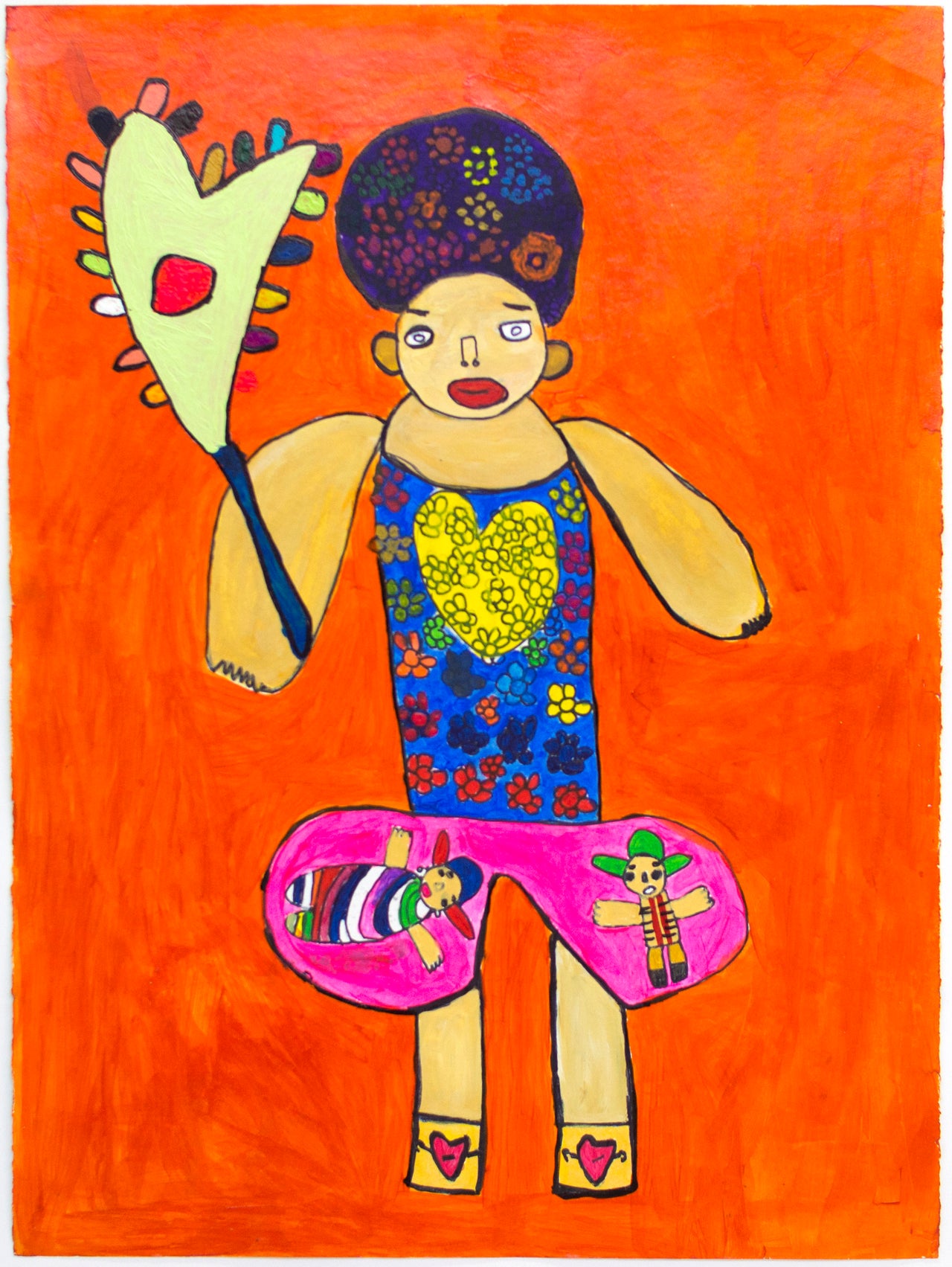
Creative Growth is a gallery in Oakland, California, that represents adult artists with developmental disabilities. The gallery is attached to a studio where approximately 160 artists make work alongside a team of staff and volunteers. Not all of the artists have made work before coming to Creative Growth, but once inside the space, they are considered working contemporary artists ― no disclaimers or caveats ― and are encouraged to pursue whatever creative directions they desire.
The space was established in 1974 by artist and educator Florence Ludins-Katz and her husband Elias Katz, a psychologist. Appalled by the rapid closure of psychiatric hospitals in California during Gov. Ronald Reagan’s tenure, they opened a space in their garage for former state-hospital patients to make art. In a 1990 book recounting their experience, they explain: “Even though a human being may be handicapped or disabled, this does not change his need to fulfill himself to the greatest of his capacity.’’
Over the past 40 plus years, Creative Growth has earned acclaim not only for its philanthropic mission, but for the exceptional caliber of work its artists consistently produce. One of the most renowned in the gallery’s history is Judith Scott, a woman with Down syndrome and deafness who never learned to speak. She learned to communicate while at Creative Growth in 1987 through weaving wild fiber cocoons that wrapped household objects in their tentacle-like grasp. The sculptures have since been shown around the world, including at the Brooklyn Museum, the Museum of Modern Art and the American Folk Art Museum.
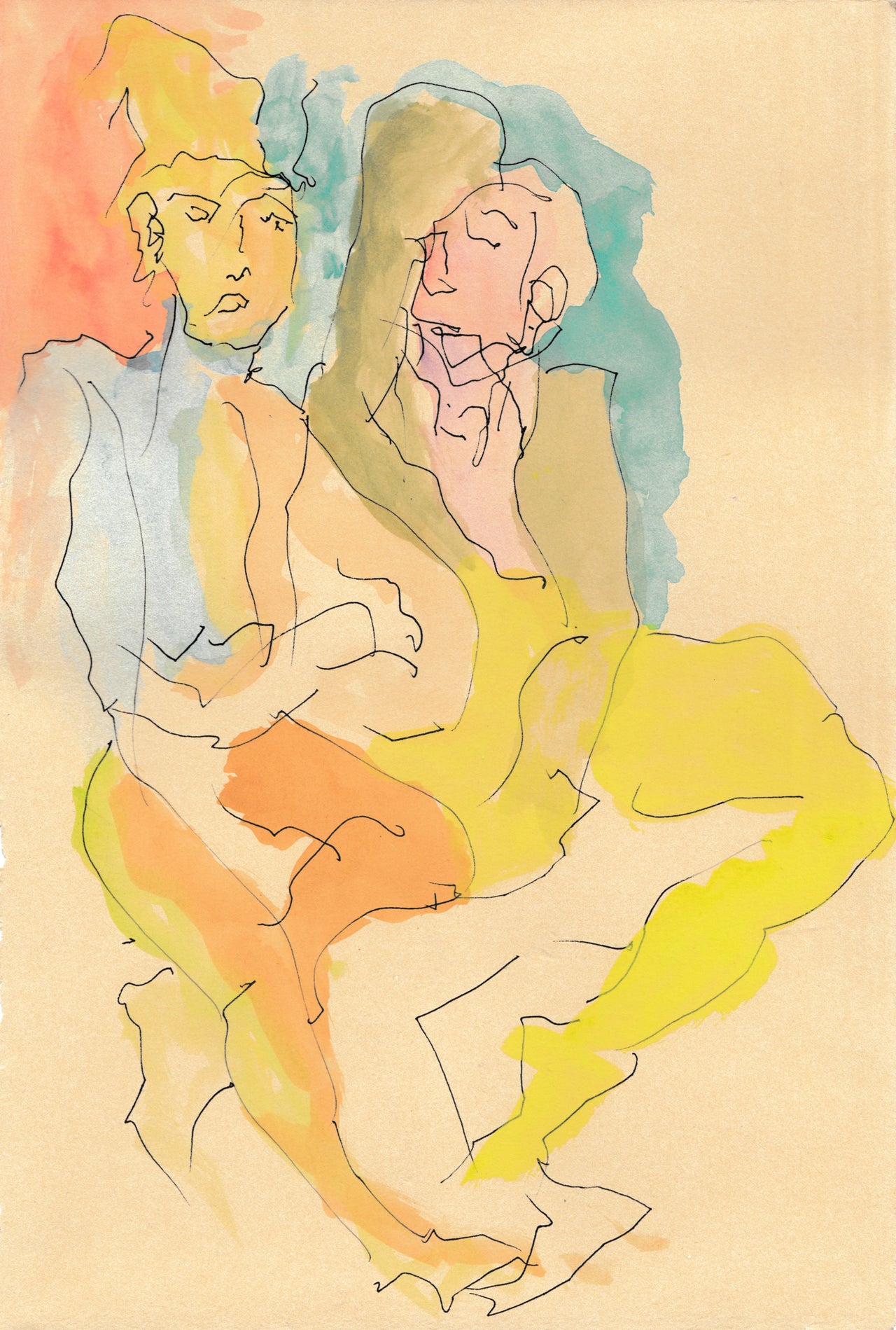
Creative Growth holds approximately seven exhibitions a year, thematically organized around work the artists are already creating. “Our exhibitions result from a dialogue with the artists’ work,” Jessica Daniel, Creative Growth’s community development manager told The Huffington Post. The current exhibition, exploring the ways gender can be expressed and unsettled, is no exception.
“We review work from the studio almost daily and it’s the work itself that inspires the exhibitions,” Daniel said. “We follow the artists’ leads. In fact, a huge component of the Creative Growth process is to never direct the artists, but allow them to discover their own voice, point of view and creative practice.”
The current political climate ― formed in part by policies espoused by President Donald Trump, Vice President Mike Pence, Secretary of Education Betsy DeVos and U.S. Supreme Court nominee Neil Gorsuch that threaten the freedom and equality of LGBTQ Americans ― made the topic all the more necessary. “It felt timely and important to engage in the larger conversations of LGBTQ rights,” Daniel said, “especially as the Creative Growth community intersects so often with the LGBTQ community.”
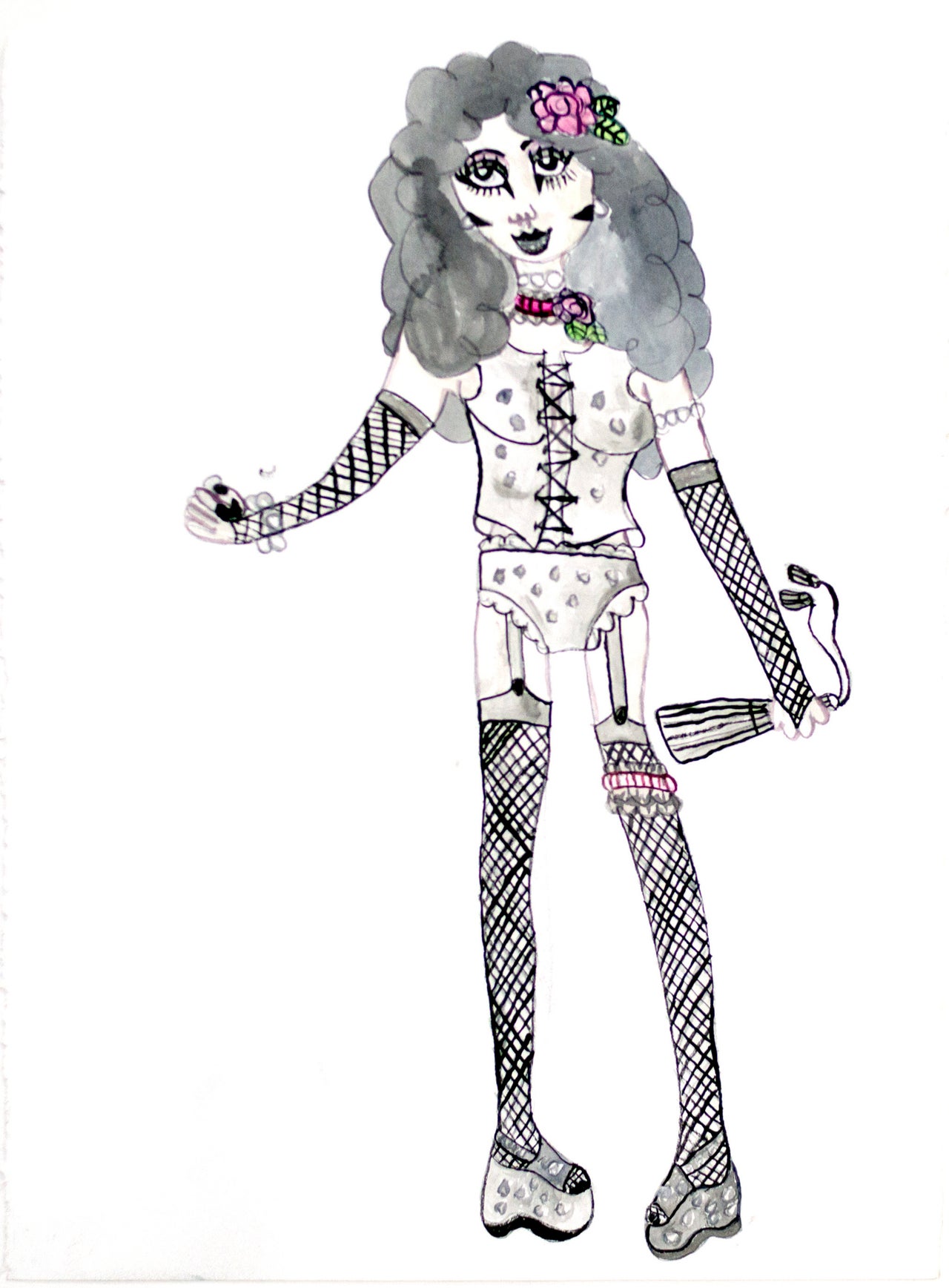
Two Creative Growth artists in particular often return to the imagery of gender in flux.
One is Aurie Ramirez, a Filipino artist whose watercolors depict androgynous, Victorian-era, punk-rock royalty, floating atop clouds and drowning in snacks. Her paintings are instantly identifiable in that they depict a recurring visual fantasy, where rocker queens don fishnet tights, garter belts and harlequin face paint, and their clock-faced compatriots dress in snappy, pinstriped suits.
Ramirez, born in 1962, was diagnosed with autism and has difficulty communicating through speech. When she began working at Creative Growth, she fostered obsessions with the band Kiss and the Addams Family, traces of which are sprinkled throughout her images. Ramirez enacts her interest in makeup, masks and performative identities off the canvas as well. She often sports dramatic makeup, with shapes painted Bowie-style across her face.
Casey Byrnes also helped shape the show with his work. He makes ceramic sculptures of the male nude with various body parts stretched out or shrunken. The figures literally treat the human body like a clay sculpture, visualizing just how easy it is to render certain parts alien, absurd and unrecognizable.
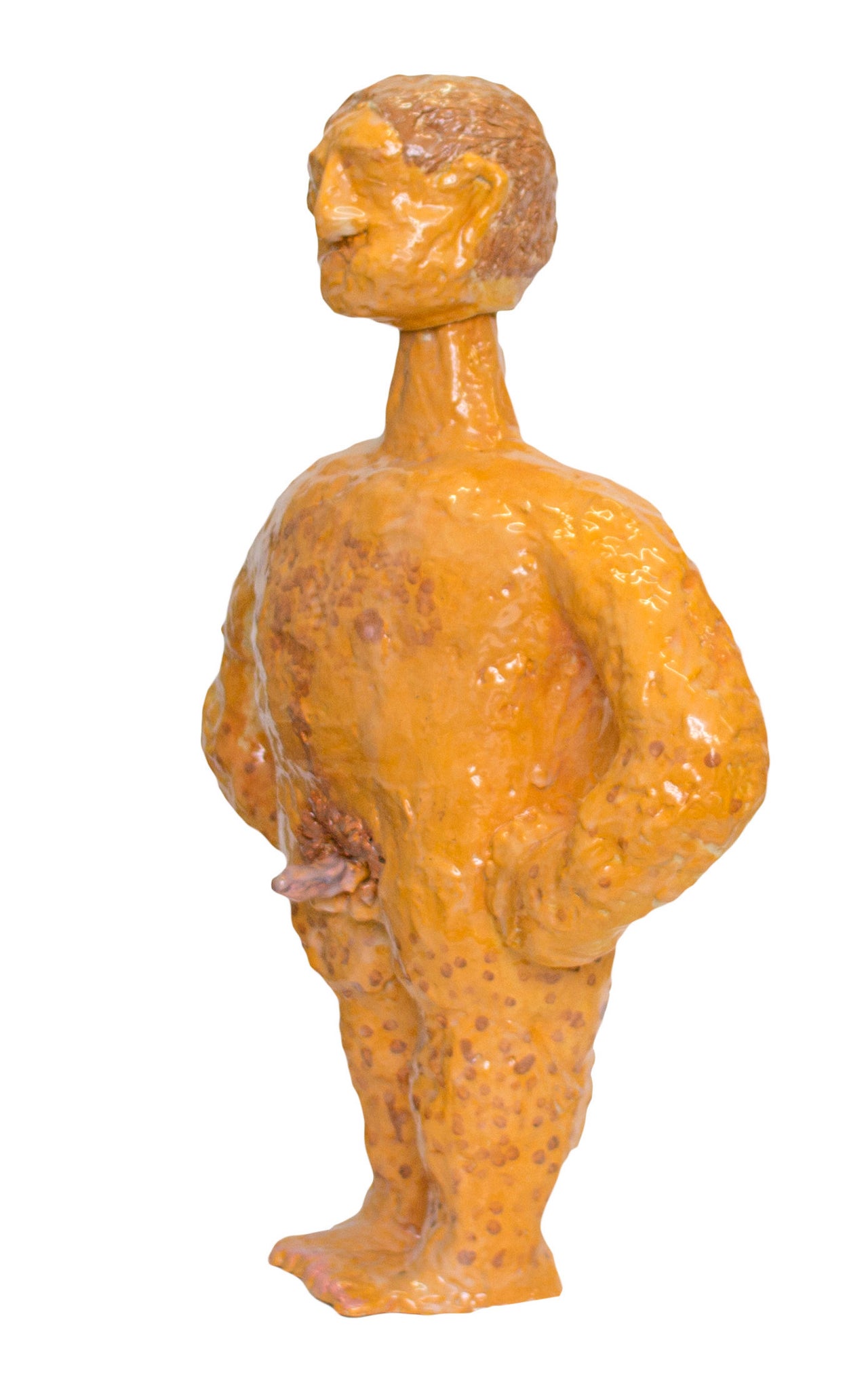
Byrnes, like Ramirez, explores the slippery terrain between genders in his daily life, as well. The artist often wears dresses for the annual Creative Growth fashion show fundraiser. “He’s creating a gorgeous woven panel gown that he will wear on the runway this year,” Daniel said.
The remainder of the featured artists employ equally distinct and playful languages to address the more uncanny manifestations of gender expression. In Carrie Oyama’s fragile watercolor-and-ink paintings, drawn with her non-dominant hand, the lines that separate human forms wiggle and shift, a testament to the unfixed nature of being in a body. “Oyama’s delicate figures certainly relate to her awareness of the human body,” gallery associate Chloe Bensahel added, “having been a dancer in New York in the 1970s.”
Artist Terri Bowden lives with legal blindness, and befriended many people with albinism who also have sight impairments. In her work, Bowden often saps both pop culture icons and wild animals of their usual hair and skin tones, imagining what other creatures would look like if they, too, had albinism. In her featured piece, Bowden alters Michael Jackson, endowing him with white tresses and ‘80s-style makeup, making the King of Pop resemble a relative of Debbie Harry.

In “Gender Bender,” the artists of Creative Growth freely express their creative visions and ornate fantasies in a language uniquely theirs. In the safe space of the art center, they can make what they want to make and, more importantly, be who they want to be.
“Creative Growth Art Center is a place where these artists can be themselves and fully have a voice of their own, outside of whatever norms exist beyond these walls,” Bensahel said. “The artists are given the space to investigate and work with whatever fascinates them, and even if it isn’t always explicit, the work is often a result of their direct experience.”
The timely show is one amongst a string of recent and upcoming exhibitions similarly grappling with questions of gender, sexuality and identity in the modern world. For Daniel, the significance is clear. “It speaks, we hope, to how artists with disabilities are also just simply artists and individuals in the world.”
“Gender Bender” is on view until Feb. 24 at Creative Growth in Oakland, California.
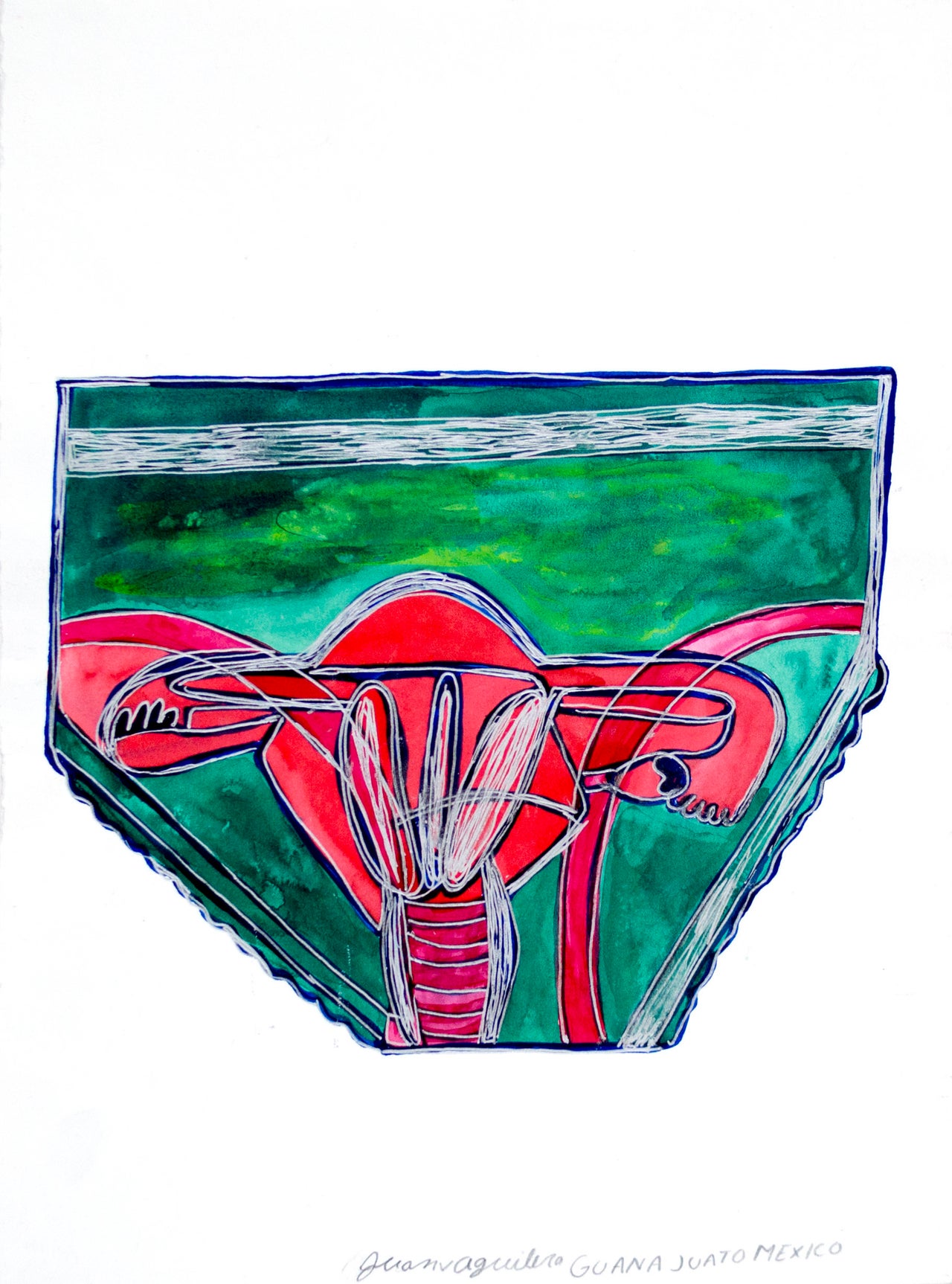
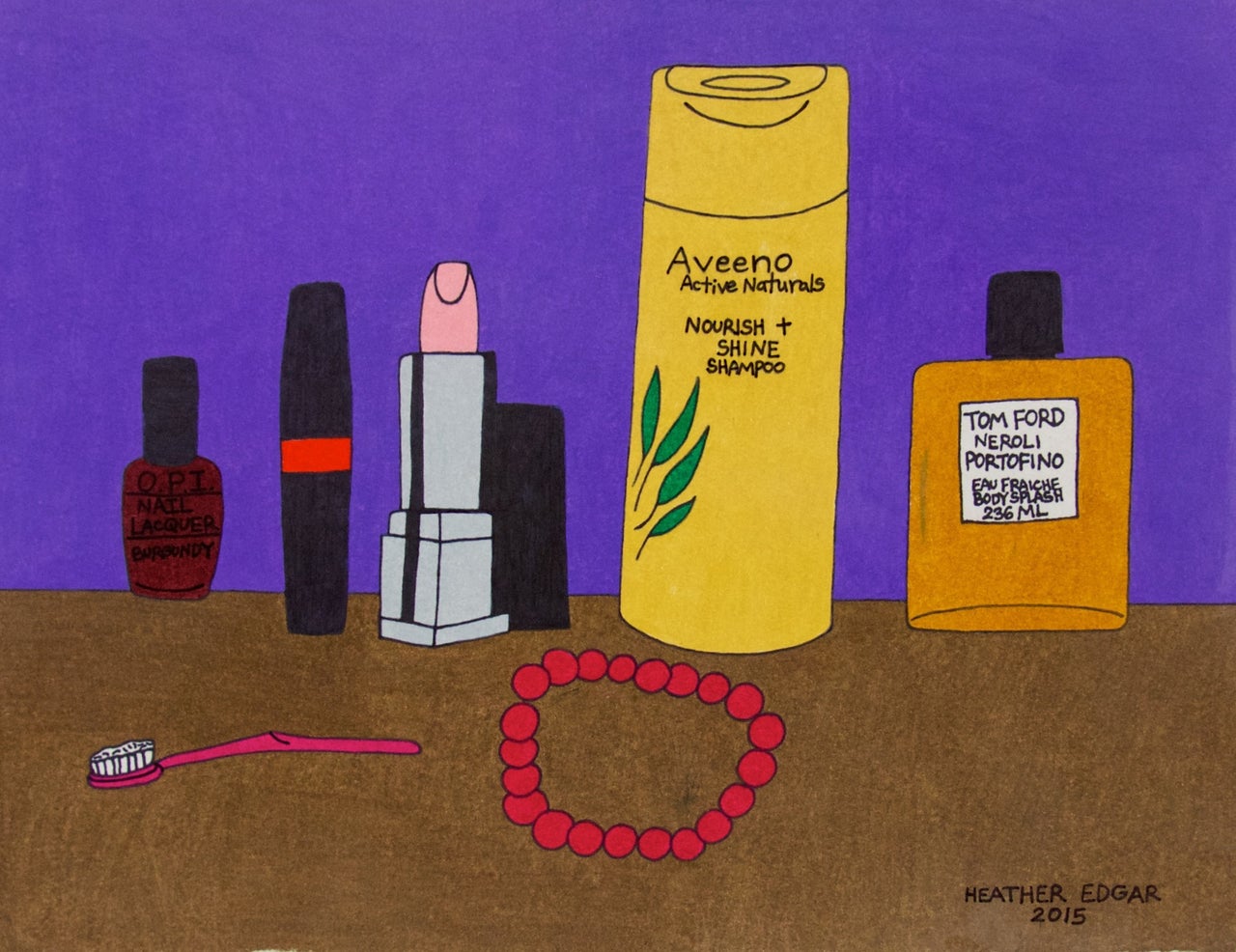
Correction: A previous edition of this article stated artist Terri Bowden herself had albinism. We regret the error.
